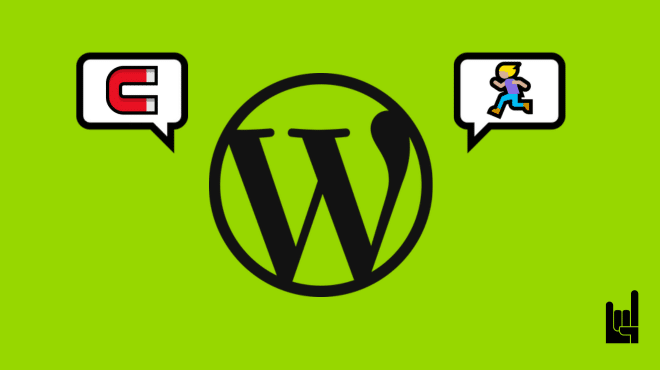Understanding MQLs and SQLs in-depth is not only about “increasing your sales” but also shaping strategies in both marketing and sales.
Let’s take a closer look behind the jargon and see what MQLs and SQLs are all about.
MQLs: Definition and Characteristics
Marketing Qualified Leads (MQLs) are leads that have engaged with your marketing content enough to be considered more likely to become customers than the average lead.
This engagement could be through actions like:
- Downloading content
- Signing up for webinars or events
- Frequent website visits
- Engaging with emails
- Filling out forms
- Requesting a demo
- Following or engaging on social media
- Using interactive tools
- Participating in online chats
- Watching videos
- Subscribing to a newsletter
- Requesting information
These actions indicate a potential interest in your product or service, making them prime targets for further marketing efforts.
Businesses with more advanced marketing and sales processes use specific criteria to identify MQLs.These criteria usually take the form of lead-scoring models, which assign points to various engagement activities. Once a lead earns enough points, they’re classified as an MQL. This system helps marketing teams prioritize leads that show a genuine interest and are more receptive to further marketing messages.

In essence, MQLs are not just any leads; they are those who have shown a tangible interest in your business, suggesting a higher likelihood of moving down the sales funnel with the right nurturing.
SQLs: Definition and Characteristics
Sales Qualified Leads (SQLs) are leads that have been evaluated by the sales team and deemed ready for a direct sales approach.
This transition from MQL to SQL is critical, as it indicates a lead’s progression from merely showing interest in your content to being considered a potential customer who is likely to make a purchase.
SQLs are usually indicated through these actions:
- Expressing purchasing intent
- Completing a detailed needs assessment
- Passing a lead-scoring threshold
- Agreeing to a sales meeting or call
- Providing budget information
- Confirming decision-making authority
- Discussing timeframes
- Requesting a proposal or quote
- Providing detailed contact information
- Engaging in a product trial or demo
- Sharing pain points or challenges
- Responding positively to sales follow-ups
The qualification of an SQL typically involves direct interaction, such as a phone call, email exchange, or a meeting, where the sales team assesses the lead’s needs, budget, authority, and timeline to buy.
By clearly defining and identifying SQLs, businesses can streamline their sales processes, focusing on nurturing these high-potential leads toward a successful sale.
MQL vs SQL: Key Differences and Similarities
The main difference between MQLs and SQLs lies in their readiness to engage in a sales conversation. MQLs have shown interest but aren’t ready to buy. On the other hand, SQLs are, according to Sales as ready for a purchase discussion.
That said, both types of leads have differences and similarities.
5 Key Differences
1. Stage in the sales funnel
MQLs are at an earlier stage, having shown interest in a company’s content or products but not yet ready to make a purchase.
SQLs are further down the funnel, having passed through additional vetting and deemed ready for direct sales engagement.
2. Qualification criteria
MQLs are primarily identified based on engagement with marketing activities like downloading content, attending webinars, or frequent website visits.
SQLs are qualified based on more detailed interactions that indicate purchase intent, such as requesting a demo, discussing pricing, or directly engaging with sales representatives.
3. Engagement level
MQLs have engaged with marketing content in a way that suggests interest but may not have taken any direct action towards making a purchase.
SQLs have taken specific actions that indicate a strong intent to buy, such as providing detailed contact information, discussing needs with a sales rep, or asking for a quote.
4. Responsibility
MQLs are typically nurtured by the marketing team until they show clear signs of sales-readiness.
SQLs are managed by the sales team, who take over to close the deal through direct engagement, negotiation, and personalized follow-ups.
5. Content focus and purpose
MQL content is designed to attract and educate potential customers at the top and middle of the sales funnel.
SQL content, on the other hand, is more targeted towards individuals who are considering a purchase at the bottom of the sales funnel.

5 Key similarities
1. Part of the sales process
Both MQLs and SQLs are integral to the sales process, representing different stages in the buyer’s journey from initial interest to purchase decision.
2. Indicator of interest
Both MQLs and SQLs indicate some level of interest in the company’s offerings, albeit at different stages of engagement and intent.
3. Need for nurturing
Both types of leads require nurturing, though the approaches differ. MQLs are nurtured through marketing efforts to elevate their interest to a sales-ready stage, while SQLs are nurtured by the sales team to convert them into customers.
4. Contribution to revenue
Both MQLs and SQLs are potential revenue sources. Their effective management and conversion are critical to the financial success of the organization.
5. Alignment between Marketing and Sales
Both MQLs and SQLs need a strong alignment between marketing and sales teams. This collaboration ensures a seamless transition of leads from marketing to sales.
Low ticket vs High ticket MQLs & SQLs
The dynamics of how MQLs transition to SQLs can vary depending on whether the focus is on high-ticket or low-ticket products or services.
It only makes sense; high ticket items, being more expensive, usually require more time and effort to convert a single lead. On the other hand, low-ticket items need to be able to convert at scale.
| Criteria | Low Ticket Sales | High Ticket Sales |
|---|---|---|
| Price point | Less expensive, often impulse buys or everyday purchases | Expensive, often luxury or premium products/services |
| Sales volume | Relies on higher sales volume, low profit margin per item | Fewer items sold but higher profit margin per sale |
| Marketing strategy | Focuses on mass appeal, discounts, flash sales, broad advertising | Builds brand value, trust; involves personalized marketing |
| Decision making | Quick decision-making with minimal research, low perceived risk | Longer decision-making process with more research |
| Customer relationship | Less emphasis on long-term relationships, focus on immediate sale | Greater emphasis on long-term relationships and after-sales support |
High-ticket scenarios
High-ticket scenarios require a more nuanced and relationship-focused approach to convert MQLs to SQLs, with an emphasis on personalized engagement and building trust.
Longer sales cycle: High-ticket items typically have a longer sales cycle due to the significant investment required. MQLs may remain in the nurturing phase longer as they require more information and reassurance before they become SQLs.
More personalized engagement: The transition from MQL to SQL in high-ticket scenarios often involves personalized engagement, such as one-on-one consultations, custom demonstrations, or sales proposals, reflecting the higher stakes involved in the purchase decision.
Greater emphasis on trust and relationship: For high-ticket items, the conversion of MQLs to SQLs is heavily dependent on building trust and a strong relationship. The sales team might need to invest more effort in establishing credibility and demonstrating the long-term value of the product or service.
Higher qualification standards: Given the larger commitment required for high-ticket purchases, SQLs are often subjected to stricter qualification criteria, including a clear demonstration of budget, authority, need, and timeline (BANT).
Low-ticket scenarios
Low-ticket scenarios are more of a numbers game. In other words, they need often to leverage automation and volume, with a streamlined process designed to quickly and efficiently convert MQLs to SQLs with less personalized intervention.
Shorter sales cycle: Low-ticket items typically involve a shorter sales cycle. MQLs can quickly become SQLs as the financial commitment and perceived risk are lower, making the decision-making process more straightforward.
Automated nurturing and qualification: In low-ticket scenarios, the process of nurturing MQLs and converting them to SQLs can often be more automated, utilizing email sequences, targeted ads, and self-service resources due to the lower individual customer value and simpler decision-making process.
Volume over value: The focus is often on converting a high volume of MQLs to SQLs, as the lower ticket price means that a larger number of conversions are necessary to achieve significant revenue.
Less need for personalized engagement: The transition from MQL to SQL may require less personalized engagement, with many low-ticket purchases being completed online without direct sales interaction, relying more on effective marketing messages and frictionless purchase processes.
How Marketing & Sales view leads and prospects
Marketing teams use this initial interest to categorize individuals as leads and then employ various strategies to nurture these leads, to further qualify them.
Sales teams, on the other hand, might use the term ‘prospect’ to refer to anyone in their target market who could potentially buy their product or service, regardless of whether they’ve engaged with marketing content.
For sales, a prospect becomes a lead only when they enter the sales process—perhaps after expressing direct interest in making a purchase or after being identified as a high-potential contact through outbound sales activities.
The distinction between how marketing and sales view leads and prospects is crucial for several reasons:
- Alignment and communication: Understanding these differences helps align marketing and sales efforts, ensuring that both teams are working towards the same goals with a clear understanding of each other’s processes and definitions.
- Strategy development: It informs the development of targeted strategies for nurturing leads and prospects through the funnel, with marketing focusing on broader engagement and education, while sales focus on personalized persuasion and closing.
- Metrics and KPIs: It affects how success is measured, with marketing looking at lead generation and qualification metrics, and sales focusing on conversion rates and closed deals.
💡 Also read: Which KPI Is Most Likely to Be a Vanity Metric?
Best Practices for Managing MQLs and SQLs
Managing MQLs and SQLs effectively is about more than just identifying them; it involves tailored strategies for each to guide them further down the funnel.
For MQLs, the focus should be on nurturing:
- Educational content: Provide valuable content that addresses their pain points and educates them about potential solutions, subtly positioning your product as a viable option.
- Segmentation and personalization: Use the information you’ve gathered about MQLs to segment them into more specific groups and tailor your messaging to fit their specific needs and interests.
- Gradual engagement: Increase engagement levels by inviting MQLs to webinars,
sending them case studies, or offering free trials, depending on their engagement level.
For SQLs, the strategy shifts to closing the deal:
- Direct communication: Engage in more direct and personal communication, such as one-on-one calls or meetings, to understand their specific needs and how your product can meet them.
- Product Demos: Offer personalized demonstrations of how your product works, highlighting features and functionalities that align with the SQL’s expressed needs.
- Objection Handling: Prepare to address common objections or concerns SQLs may have, showcasing your product’s value proposition and how it stands out from competitors.
Aligning MQLs and SQLs with the AARRR Funnel
You are probably already familiar with the AARRR framework, aka growth funnel. It’s the measurable process through which a visitor becomes a paying customer, through five stages:
- Acquisition
- Activation
- Retention
- Referral
- Revenue
The AARRR funnel provides a broader view of the customer journey, and goes beyond the MQL and SQL stages. In other words, it’s the framework that allows you to move from digital marketing to growth marketing.
While MQLs and SQLs primarily focus on the initial stages (Acquisition and Activation), integrating practices from the AARRR funnel can offer a more holistic approach to lead management.
- Acquisition: Similar to attracting MQLs, it’s about bringing potential customers into your funnel through various channels and strategies.
- Activation: This stage aligns with nurturing MQLs, where you aim to increase their engagement and interest in your product.
- Retention and Referral: While these stages extend beyond SQL management, applying nurturing techniques used for MQLs can help in retaining customers and encouraging referrals, contributing to long-term growth.
- Revenue: The ultimate goal with SQLs is to close sales, directly contributing to the Revenue stage of the AARRR funnel.
Incorporating elements from the AARRR funnel into your MQL and SQL strategies can not only improve lead management and customer acquisition cost but also enhance overall customer lifecycle management, leading to better customer retention and revenue growth.
Conclusion
Are you looking to nurture your leads?
To nurture both marketing-qualified leads (MQLs) and sales-qualified leads (SQLs) successfully, you will need a variety of digital assets:
📷 Content marketing to engage audiences by providing valuable information, with broader topics for MQLs and more detailed solutions for SQLs.
🧵 Tailored landing pages to convert visitors with compelling calls-to-action, catering to the specific needs of MQLs and SQLs.
📧 Segmented email campaigns that allow for personalized communication, with content varying from educational for MQLs to more sales-oriented for SQLs.
🤳 Social media platforms to engage leads differently, sharing broad content for MQLs and direct engagement for SQLs.
🎓 Webinars and virtual events, offering industry insights for MQLs and product-focused sessions for SQLs
💬 Case studies and testimonials to build trust, showcasing value for MQLs and providing concrete success evidence for SQLs.
🔍 A Google-proof SEO strategy that ensures discoverability, targeting broader keywords for MQLs and specific solutions for SQLs.
🎯 Retargeting campaigns that recapture interest, focusing on top-of-funnel content for MQLs and product-specific content for SQLs.
📈 Analytics and performance tracking optimize strategies, revealing what content and channels effectively engage leads at different stages.
Need help with any of those?
Contact us and find out more about how we bring growth marketing to MQLs and SQLs.

I write for GrowthRocks, one of the top growth hacking agencies. For some mysterious reason, I write on the internet yet I’m not a vegan, I don’t do yoga and I don’t drink smoothies.




